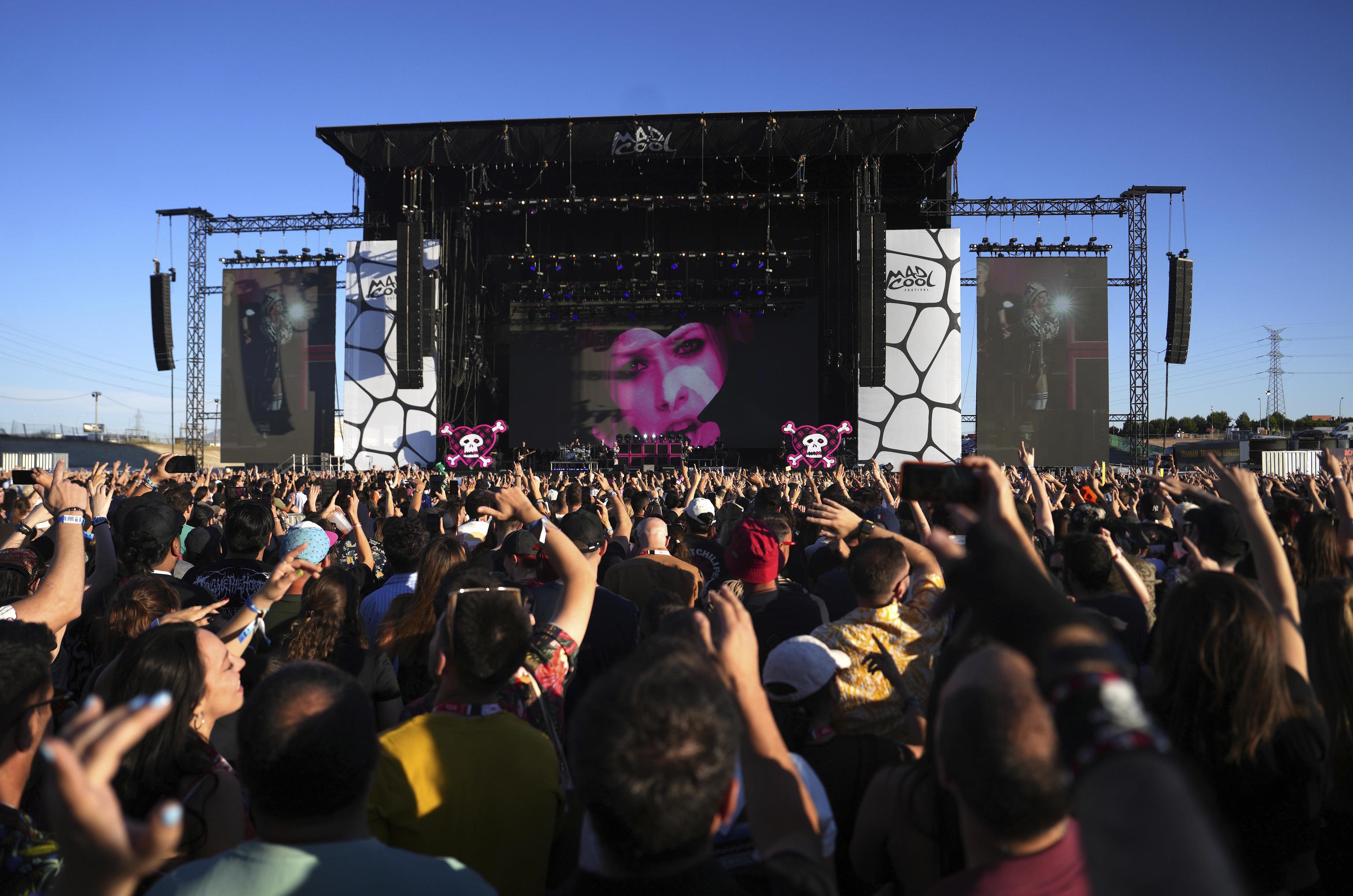Jolene and Kellyn are a middle-aged couple, around fifty, who were recently stuck in a legal procedure in Phoenix, United States. However, facing a hefty fine was not their main concern; for them, the real drama was missing out on Mad Cool 2024. "We love festivals, and last year, which was our first time here, we were absolutely captivated. We decided never to miss it again," she says. But why travel nine thousand kilometers for an event like this?
The data from the report Economic Impact on the Live Music Industry, prepared by OBS Business School and led by Professor Elena Mir, indicates that Spain has become the top destination for festival tourism in the world. In 2023, the Spanish live music sector generated record figures: over 570 million euros, a 26% increase from the previous year.
"Coming to Spain is not a prohibitive plan," says Kellyn, detailing the expenses needed for a week at Mad Cool coming from the United States: "We bought the flights 10 days before coming, each flight cost $900. We stayed at a hotel in Atocha, where the commuter train leaves us back, and it cost us around $15,000 for six nights." The numbers speak for themselves. In fact, the Live Music Yearbook 2024 compiled by the Association of Music Promoters (APM) states that in 2023, "tourists' spending reached a historic peak" amounting to around 14 billion euros according to INE data.
Immediately after Kellyn discusses financial matters, Jolene interjects: "We don't usually splurge, but we really enjoy festivals." This couple is part of the loyal audience of California's most famous festival: Coachella. "We've been going for 19 years straight, but Mad Cool is infinitely better because the musical acts are more in tune with a much more eclectic audience, whereas Coachella is very young and everything is mainly oriented towards hip-hop and rap. I get the impression that it has lost track of artists who know how to perform live, while Mad Cool keeps alive the spirit of traditional festivals."
The report prepared by APM positioned Madrid as "a city that has been illuminated, with a very rigorous and conscious administration." Mad Cool is a significant reason to visit the Spanish capital, as Rahoul and Anna Marie, a Finnish couple who love festivals (and Spain too), explain. "We don't fly much because it's very harmful to the planet, but we felt like leaving Finland and had been considering coming to Madrid for a while. We heard great things about the festival, that it was eco-friendly and that we would have a great time. We're loving it," they say.
The most important festival in the capital, gathering over 200,000 people, ranks fourth nationally, just behind Arenal Sound, Primavera Sound, and Viña Rock, with slightly larger capacities. But it seems that tourists visiting Mad Cool appreciate the space and the absence of overwhelming crowds in front of the stages: "There's plenty of space, and you feel very comfortable at all times," explain Croatians Josip and Mislav. The latter discovered the festival a year ago: "I came with four friends, and we were blown away. This year, no one wanted to come with me, but I met Josip last week at another festival in Zagreb and convinced him to come with me," he says. For his friend, Mad Cool has been a revelation: "I'm a big fan of festivals, and so far, this one surpasses all the ones I've visited in Croatia. A ten in organization, a ten in the lineup, and a ten in the atmosphere," Josip comments.
At times, while walking around the venue, it seems easier to come across foreigners than Spanish attendees. Among the forecasts for this year from the Ministry of Industry and Tourism, data indicates that throughout the summer period, foreign arrivals would increase by 13%. Even those who seem to be native Madrileños are actually from elsewhere. Everything rubs off. "The festival is something to live for," say Sebastiano, Joanni, and Salvatore, all Italians and residents of Luxembourg. "I had already been to Madrid, but they hadn't," says Joanni, a staunch Pearl Jam fan who convinced his friends to see them at Mad Cool. "We wanted to make the most of it, so we stayed for a week. It was very affordable: flights a month ago for less than 200 euros, and we stayed in a hostel in Malasaña," says Sebastiano. He doesn't remember the price, but "it wasn't too much," he says, patting his wallet. "We've been able to combine a plan we love, like a festival, with tourism in a city where everything is good, beautiful, and cheap compared to Luxembourg," adds Salvatore.
The Live Music Yearbook 2024 explains that Madrid lacks the type of venues needed for events like Mad Cool. However, according to returning tourists, the organization has significantly improved. "You can tell they're learning over time: last year, I waited 55 minutes to pick up my wristband, and this year it was just ten seconds," notes Mislav, the Croatian. Likewise, foreign critics have praised the cleanliness of the venue: "In general, Spain takes much better care of festival environments than other places, and that is greatly appreciated because it makes the experience much more enjoyable," says Valentin, a French guy. Rahoul and Anne Marie, the Finns, also mention this while sitting on the ground, where they say they are much more comfortable: "The artificial grass is the best; it's much cozier and less messy. We don't see any trash, and people seem much more conscious of their surroundings."
The report by OBS Business School indicates that "the big music stars have moved away from the festival format," but the lineups of Spanish festivals continue to be a major draw for a large foreign audience. Kellyn, the American, reiterates this: "I prefer to see bands play live rather than rappers or pop stars who lip-syncand don't even do it well."

